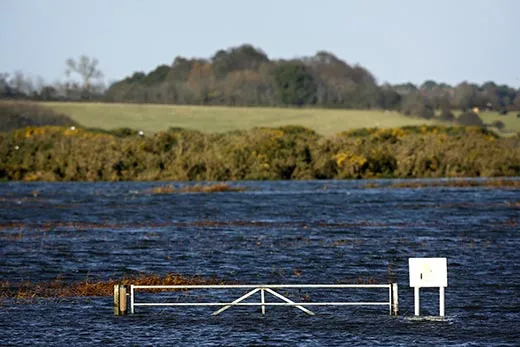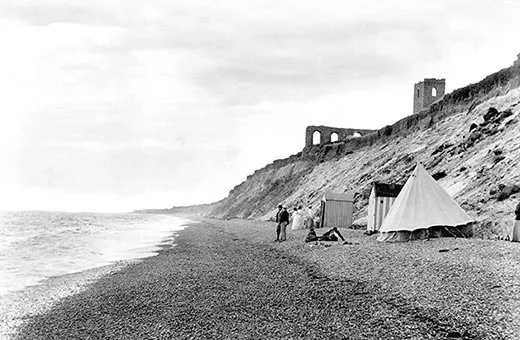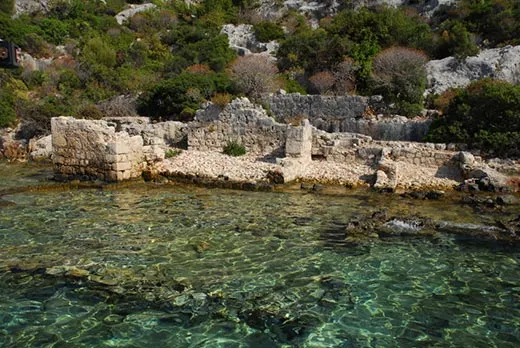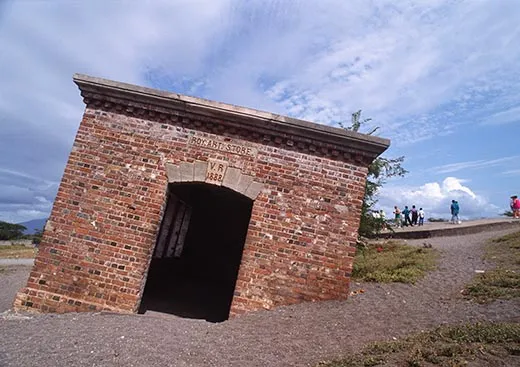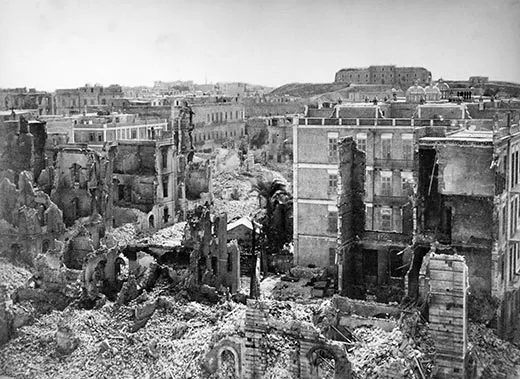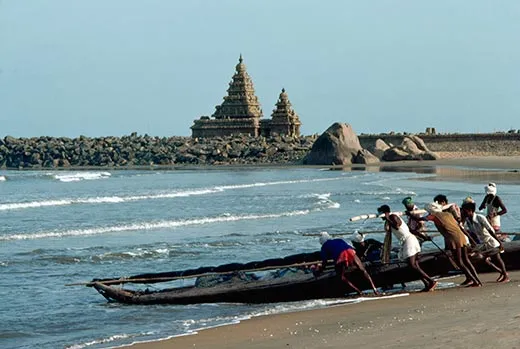Ancient Cities Lost to the Seas
Dunwich, England, is one of several underwater sites where divers are discovering new information about historic cultures
/https://tf-cmsv2-smithsonianmag-media.s3.amazonaws.com/filer/Dunwich-England-631.jpg)
Beneath the slate-gray surface of the North Sea, about a half-mile off England’s east coast, lies the underwater town of Dunwich. Crabs and lobsters skitter along the streets where some 3,000 people walked during the town’s heyday in the Middle Ages. Fish dart through the sea sponge-ridden ruins of its churches, now partially buried in the seabed some 30 feet down.
Erosion—caused by the North Sea’s relentless pounding of England’s east coast—had all but consumed Dunwich (pronounced DUN-ich) by 1750. And the sea’s silty, cold waters made visibility almost nonexistent for the intrepid few who wanted to explore the medieval ruins.
Until now. Thanks to advances in acoustic technology, a group of divers and a geomorphologist are surveying the sunken town this summer using multibeam and sidescan sonars that can detect objects on the seafloor. During a survey last year, the group mapped two churches and found evidence of a third.
“This is absolutely opening the seas up,” said David Sear, the Dunwich project’s geomorphologist who teaches at the University of Southampton. And, he added, the North Sea has plenty to reveal; in addition to Dunwich, Sear would like to use the undersea technology to explore the submerged towns of Old Kilnsea and Eccles that lie farther north.
The English sunken sites join a list of others that span the globe. According to UNESCO, submerged settlements have been found in Egypt, India, Jamaica, Argentina, Denmark, Sweden, Italy, and the Black Sea.
“Under the sea is probably the world’s biggest museum,” said James P. Delgado, president of the Institute of Nautical Archaeology based in Texas. “There’s not a lot of work going on in this area right now, however. The issues are time, money, interest, and research. Just to do a single shipwreck can take years.... Underwater archaeology costs 10 times more to dig.”
In addition to these issues, Delgado noted a strong push toward conservation pervading the world of nautical archaeology. People aren’t jumping into the water unless a site is in danger or stands to advance research.
For Sear, surveying Dunwich answers a question people in the region have asked for years: Is anything left?
“In the 1970s when I was a child playing on the beach, the last remains of All Saints church were visible on the shoreline,” Sear said in an e-mail. “Hence why I got fired up over the place!...The sand banks grow and decline over time, so there are periods when more of the site is exposed (1970s) and when they are not (now). As the coast recesses, so the banks migrate shorewards covering more of the site. The exposed remains lie in a tidal scour channel between the inner and outer bank. This migrates shorewards too; so in another 100 years different ruins may well be exposed, assuming the coastal morphology remains the same.”
Sear expects to find ruins of religious structures and forts, since they were made of stone. Houses were made of timber or wattle and daub.
Lead diver Stuart Bacon has found several objects since he began his exploration in 1971. One of the most exciting finds to date is a portion of a slab used to cover a knight’s tomb in 1320, a fine example of the prosperity Dunwich once enjoyed.
“Eight hundred houses... a dozen abodes of prayer and worship, windmills, workshops, taverns, shops, storehouses, ships,” wrote Rowland Parker in Men of Dunwich, the 1978 classic reference book about the town. “It would be difficult to think of an every-day commodity in existence in the late 13th century which was not obtainable in Dunwich market-place, either immediately or ‘when the next ship comes in from’ Copenhagen, Hamburg, Barcelona or wherever.”
The sea that brought trade to Dunwich was not entirely benevolent. The town was losing ground as early as 1086 when the Domesday Book, a survey of all holdings in England, was published; between 1066 and 1086 more than half of Dunwich’s taxable farmland had washed away. Major storms in 1287, 1328, 1347, and 1740 swallowed up more land. By 1844, only 237 people lived in Dunwich.
Today, less than half as many reside there in a handful of ruins on dry land. These include portions of the Greyfriars monastery and a corner of All Saints’ cemetery. Beachcombers have occasionally seen bones protruding from the cliffs, left over from burial grounds that are crumbling into the sea. And local fishermen over the years have said they heard bells tolling in the church towers from beneath the waves.
Ghostly sounds or not, the rediscovery of Dunwich continues. Sear wants to create a 3-D map of the church sites found so far. The group wants to expand the survey to cover other churches and structures.
“We’ve got to be in for some surprises,” he added.
Around the world, other sunken settlements have been explored or are the subject of current work:
* Kekova, Turkey: The partially submerged ruins of the ancient city of Simena are easy to see through the clear turquoise waters off Turkey’s southern coast. A massive earthquake buried much of Simena in the 2nd century AD. Tourists can swim near the ruins or see them from glass-bottomed tour boats.
* Port Royal, Jamaica: On June 7, 1692, an earthquake wiped out this Caribbean port, once known as “the wickedest city on Earth.” Two thousand people were killed instantly, and many others perished later. Nautical archaeologists have found eight buildings so far.
* Alexandria, Egypt: Divers have found remnants of Alexandria’s famous lighthouse in the bay, as well as Cleopatra’s palace. UNESCO is looking into whether the world’s first underwater museum could be built here.
* Mahabalipuram, India: Several manmade structures believed to be temples built in the 7th or 8th century surfaced off India’s southeast coast after the 2004 tsunami. Some believe they are pagodas that were part of this pilgrimage city, which is now a World Heritage site.
* Tybrind Vig, Denmark: During the late Mesolithic period (5600 to 4000 BC), people hunted, fished, wove fabric, and were buried in this new submerged settlement close to the west coast of the island of Fyn.
